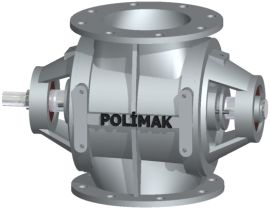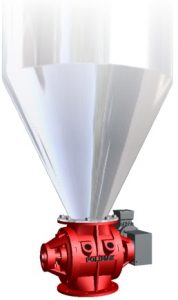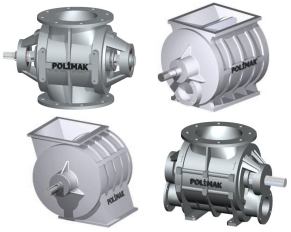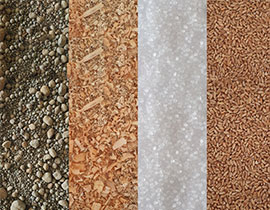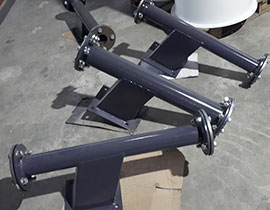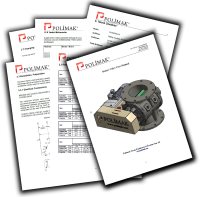Food
The processing of most food products is fairly easy hence the basic valve design can be used without compromising the product. Foods such as salt, sugar, baking soda, wheat, rolled oats, rice, dry beans, dried corn etc. that contain preserving or sterilizing agents and do not pose any corrosion risks can be processed by a standard constructed valve. On the other hand, foods such as fatty milk powder, and infant food products have a high degree of sensitivity and require the use of a properly configured valve. The configurations include stainless-steel with a polished internal surface. The dairy sector also makes use of the properly configured rotor valve significantly. The valve is responsible for material movement whilst maintaining sanitary surroundings. The valve is designed to keep away from bacteriological contamination.
Biomass
This industry needs a valve that can simultaneously withstand the material’s hostility and maintain proper functionality. The valve serves two main purposes, (i) to behave like a lock – prevention of fire and gas reflux. (ii) to behave as a feeder – feeding the biomass to the pneumatic conveying line that conveys the biomass to the burning chamber. Thanks to the advanced geometry of the valve, large sized biomass particles of up to 50mm can be fed to the conveying line. The valves can be manufactured from carbon steel or cast iron. Further enhancements for durability are possible by means of coating.
Foundry
Steel, aluminum, cast iron, bronze, and brass are some of the common raw materials used in many industries. Foundries are places that generate a high amount of dust. Metal melting and casting are the primary sources of dust emission. Dust collection systems are used to provide a safer environment. The dust is carried from the source by a suction tube attached to the dust collector with the hooper at the bottom. The hooper is fitted at the bottom with a rotary valve for continued release of dust. The dust enters the dust collector, and the heavy particles fall down to the hooper due to the baffle plates used in the system, then exits via the rotary valve into the bin.
Chemical
Similar to the processing of infant foods in the food industry, the valve used in the chemical industry must be corrosion resistant, easy to clean, and able to withstand harsh environments. This industry involves the movement of delicate and pure chemicals whose purity cannot be imperiled. Hiccups must be avoided at all costs because of the nature of the industry.
Aggregate and Mining
Just as the name ‘aggregate’ entails, this industry is responsible for the manufacturing of building materials such as materials driven from the Earth’s core (sand, asphalt, cement, sandstone, garnet, ceramic, silicon carbide, slag etc.). Due to the nature of the industry, the valve must be solid to put up with the materials roughness and toughness. The prime function is to convey the material from an inlet down through its desired point of work. The valve must have the following characteristics; abrasion resistant, Hardox rotor and housing, and coated internal surface with tungsten carbide or hard chrome. This particular valve is not only used in this industry, but also in asphalt, cement, coal, and mining industries just to mention a few.
Agriculture
This is one of the industries that immensely makes use of the rotary feeder. The rotary valve is used mostly for handling grains. The grains are supplied to the valve, then the valve discharges the grains to the conveying pipeline. Properly selected rotary valves provide good service without harming handled product.
Other bulk materials handled include cement, calcite, ash, glass powder, marble powder, plastic pellets, sawdust, fly ash, coal, coal dust, wheat, flour, barley, feed, seed, corn, chickpea, bean, soybean, sesame, rice, rice flour, dried fruit, nuts, peanut, almond, sunflower seed, cotton seed, grain cereals, chestnut, coffee grain, coffee powder, sugar, salt, spice.
